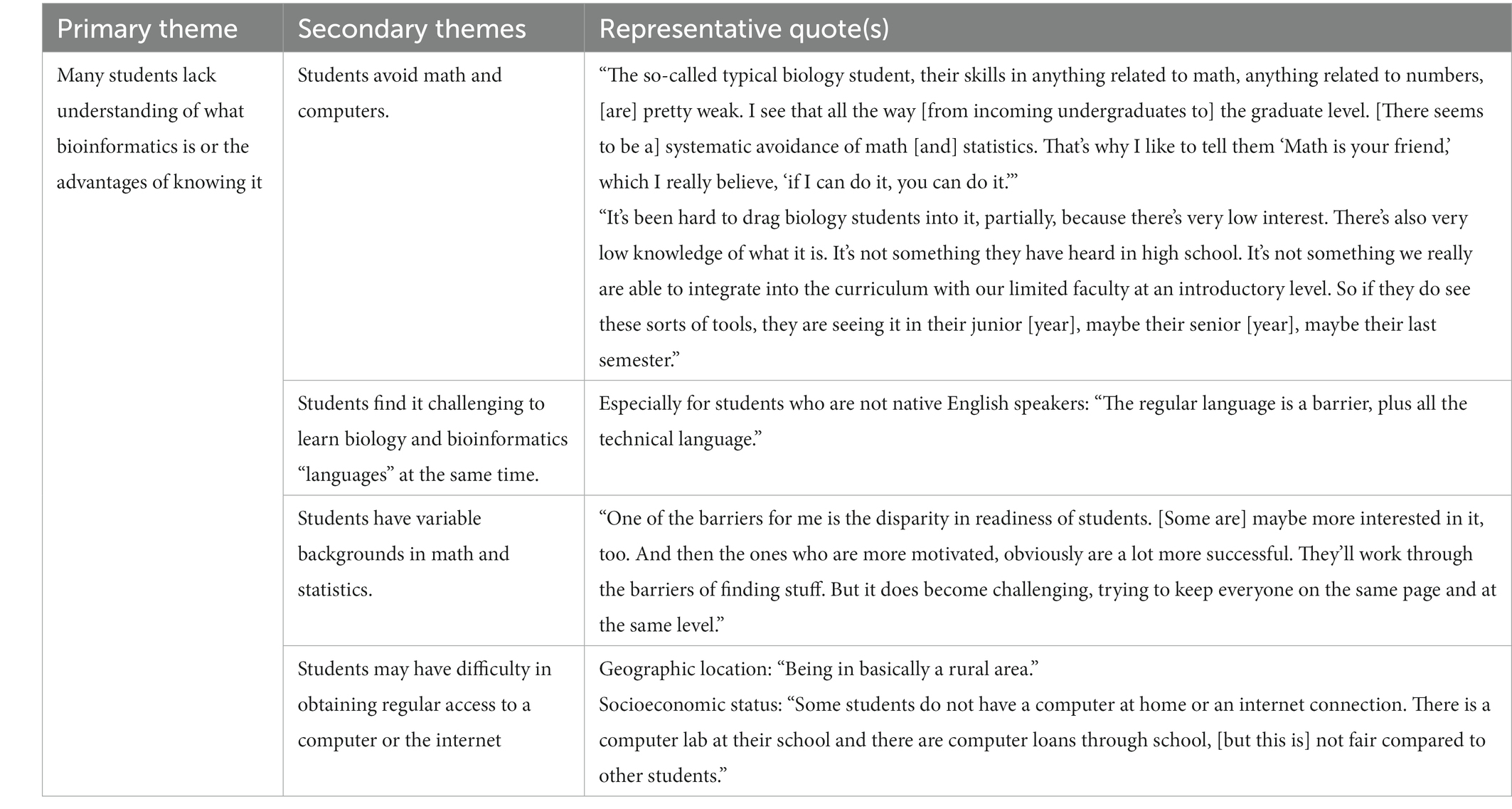Getting My Bioinformatics Tutor To Work
The Definitive Guide to Bioinformatics Tutor
Table of ContentsBioinformatics Tutor for DummiesThe 2-Minute Rule for Bioinformatics TutorThe Best Guide To Bioinformatics TutorTop Guidelines Of Bioinformatics TutorGetting My Bioinformatics Tutor To Work
Of the total amount individuals included in the training, 80% were pupils from public college establishments, while the continuing to be 20% came from exclusive institutions. To receive a certification of engagement, trainees were needed to attend at the very least 90% of the complete training hours. As a result of this requirement, an outstanding 95% of the participants efficiently acquired their certificates, having not just satisfied the minimum attendance standards however also finished all designated activities throughout the training.
During the elevation of the COVID-19 pandemic, specifically in between June and August 2020, the project team was entrusted with organizing specialized training in bioinformatics. This training was specifically aimed at pupils from the research group Core for Research in Applied Computer at the Federal College of Pará (UFRA) The adaptation to remote understanding platforms because of the pandemic developed an opportunity to check out brand-new teaching methods and electronic tools that improved both reach and performance.
This program was designed to give an easily accessible yet extensive summary of Artificial Intelligence techniques, specifically as applied in bioinformatics (Bioinformatics Tutor). This digital style made it possible for participation from students across Brazil, many of whom may not have had the opportunity to participate in in-person sessions.
Bioinformatics Tutor Can Be Fun For Everyone
Around 50% of the overall training hours were devoted to sensible tasks where pupils constructed smart versions and applications in an array of scientific domain names, including genes, molecular biology, and ecological information evaluation. These systems allowed trainees to involve in real-time data control, design training, and algorithm experimentation.
The program drew in 80 participants in total. Sixty of them were affiliated with various college establishments in the state of Pará, while the continuing to be twenty originated from organizations located in five various other Brazilian states. This wide geographical representation highlighted the national interest in bioinformatics and the expanding need for specialized skills in this field. By introducing Artificial Knowledge in a sensible and appropriate context, the initiative offered to connect the gap in between concept and real-world application, offering students with a strong foundation for future research or employment in the field.
The training effort formed component of a broader scholastic outreach effort called the Bioinformatics when driving task. This job has, for many years, introduced loads of trainees to the world of bioinformatics and computational biology. The events held under this umbrella campaign have occurred across numerous regions and years, as summarized in Table 1 (Checklist of events, places, years, and complete numbers of trainees and teachers)
One of one of the most exceptional outcomes of the Bioinformatics on the this post Road campaign has been its contribution to the development of decentralized study groups. Several of these teams, initially combined by their engagement in training occasions, have considering that taken place to produce independent scientific research study in cooperation with local academic organizations. The training not just cultivated clinical thinking within the context of bioinformatics but likewise stimulated joint relationships that extended beyond the training atmosphere. These partnerships have actually brought about increased regional scientific efficiency and added meaningfully to the growth of the more comprehensive bioinformatics area in Brazil.
7 Easy Facts About Bioinformatics Tutor Described
The exact same team, omitting IH and RR, additionally acted as tutors for the useful training components. Funding for the job was provided with the give 88887.200562/ 2018-00 from CAPES.
The Federal University of Pará's Office of Study (PROPESP/UFPA) also supplied financial support, particularly for the manufacturing of the final manuscript. The authors declare no business or economic problems of interest that might have affected the research. All interpretations and opinions revealed in this post are only those of the writers and do not always reflect those of their respective organizations, the publisher, editors, or reviewers included in the publication process.

Bioinformatics Tutor - The Facts
From a pedagogical perspective, the training strategy made use of in the training was deliberately interactive. Classes were conducted in a manner that urged pupil involvement and discussion, surpassing memorizing memorization to discover exactly how ideas are developed, used in life, and tested in scholastic setups. The training philosophy concentrated on supporting click here to find out more both strong and struggling pupils, supplying individualized assistance, and structure confidence via continual mentorship and patience.

Each team, being composed of around 36 participants, was sustained by 3 coaches-- the majority of whom were postdoctoral scientists with customized competence. These coaches not only aided create the group tasks but additionally facilitated their try this web-site implementation, making sure that each research inquiry was both pertinent and properly challenging. The objective was to offer a naturally sensible context that participants can explore via open-ended objectives and accessibility to curated datasets.
For additional understandings into the technique and results of this project-based learning technique, readers are routed to S1 Text, that includes thorough descriptions of the instructional framework, examination strategies, and task themes utilized in the training sessions.
Excitement About Bioinformatics Tutor
Of the overall individuals involved in the training, 80% were students from public higher education and learning establishments, while the remaining 20% came from private organizations. To certify for a certification of engagement, pupils were required to attend at least 90% of the overall training hours. Significantly, past the pupils that enlisted in the training sessions, seven seasoned teachers participated in delivering the courses, while three dedicated study teachers collaborated the overall training process. Roughly 50% of the overall training hours were devoted to functional tasks where trainees developed intelligent designs and applications in a variety of scientific domains, including genetics, molecular biology, and ecological information evaluation. The training not just promoted scientific thinking within the context of bioinformatics but additionally triggered joint partnerships that prolonged past the training setting.